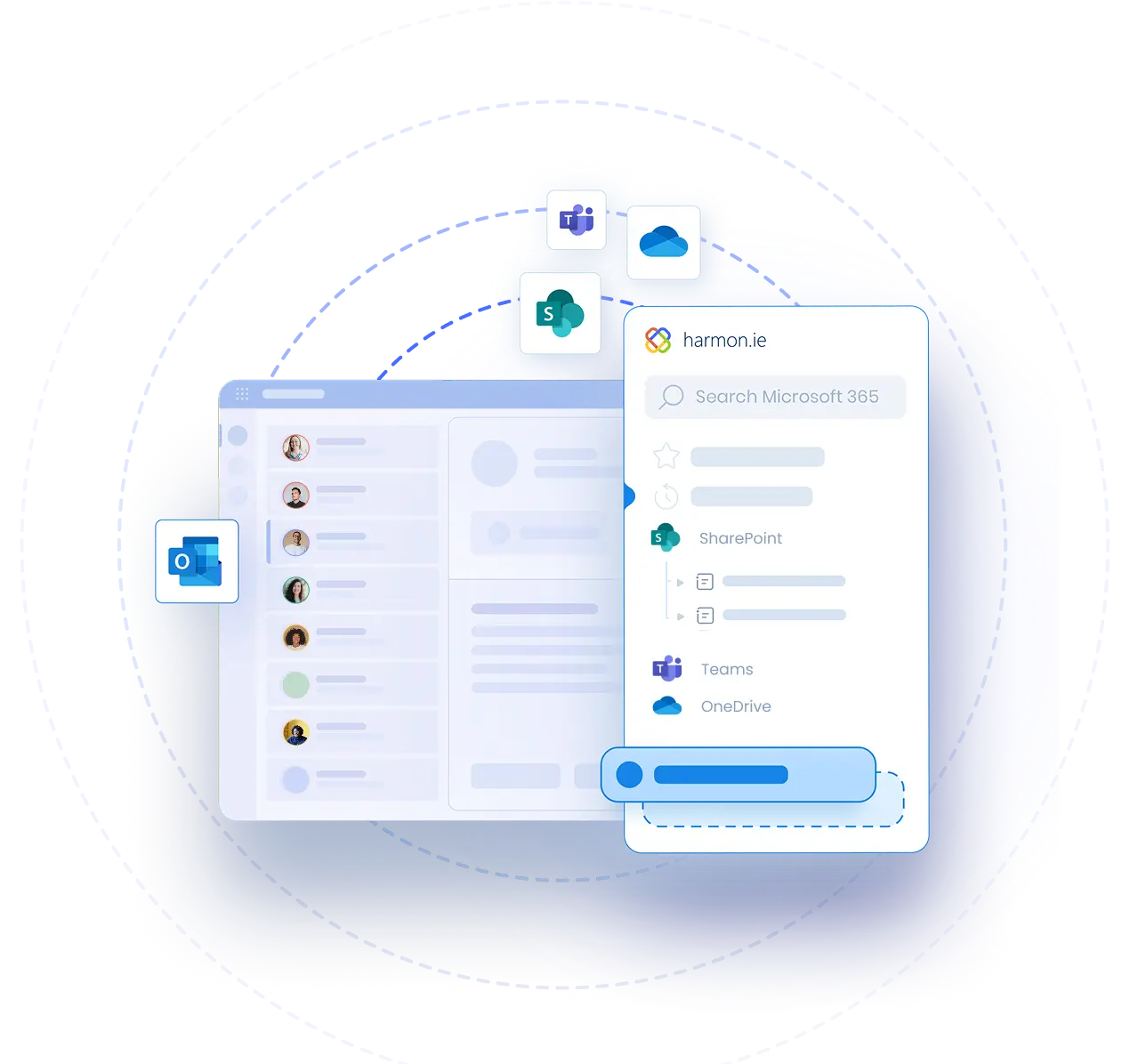Keys to a successful ECM solution implementation
Regardless of the selected solution, there are some straightforward actions to take as you prepare for implementation and go live to facilitate widespread adoption and usage.
ECM Implementation:
7 Keys to Success with harmon.ie
Implementing an Enterprise Content Management (ECM) solution doesn’t have to be overwhelming. With the right strategy and the right tools-like harmon.ie-your organization can streamline document management, boost compliance, and empower your teams to work smarter.

What Is ECM Implementation?
ECM implementation is the process of deploying a system to manage, organize, and secure your organization’s documents and content. A successful ECM implementation helps your team quickly find, share, and protect information, driving productivity and regulatory compliance.
7 Keys to a Successful ECM Implementation
1. Define Clear Business Objectives
Identify your top priorities: improved document retrieval, seamless collaboration, or regulatory compliance? Clear objectives will guide your ECM implementation and help you measure ROI.
2. Secure Executive Sponsorship
Gain leadership support early. Executive sponsors provide resources, champion change, and help overcome resistance.
3. Engage Stakeholders Early
Involve end-users, IT, compliance, and business leaders from the start. Their input ensures your ECM solution meets real needs and gains buy-in.
4. Choose the Right ECM Platform
Why harmon.ie?
harmon.ie stands out by integrating ECM capabilities directly into Microsoft Outlook, Teams, and SharePoint. This means your users can manage documents and emails without leaving their daily apps-driving adoption and productivity.
harmon.ie ECM Features:
- Outlook & SharePoint integration
- Outlook & Teams integration
- Drag and drop filing
- Automated metadata/information-management/teams-outlooka tagging
- Real-time collaboration
- Simple interface and easy user adoption
5. Prioritize User Experience & Adoption
A user-friendly ECM solution is key. harmon.ie’s familiar interface lets employees manage documents, emails, and records right from Outlook – reducing training needs and resistance.
6. Plan for Change Management & Training
Communicate benefits and provide hands-on training. harmon.ie offers onboarding resources and responsive support to ensure a smooth transition.
7. Monitor, Optimize, and Scale
Track KPIs such as user adoption, search times, and compliance rates. harmon.ie’s analytics help you refine your ECM processes and scale as your organization grows.
Bosch case study
The combined SharePoint/harmon.ie solution helps Bosch manage its millions of daily emails, including those business records that need to be accessed by colleagues.

“We want everybody to use harmon.ie, because once you use it, you love it.”

harmon.ie: Your ECM Implementation Partner
Drag-and-Drop Filing
File emails and documents in seconds.
Seamless Microsoft 365 Integration
Manage content from Outlook, Teams, and SharePoint.
Automated Metadata
Ensure documents are properly classified for compliance.
Dedicated Support
From onboarding to troubleshooting, harmon.ie’s team is with you every step.
ECM Implementation FAQs
How do I train my team for ECM implementation?
harmon.ie provides comprehensive onboarding, video tutorials, and ongoing support to help your staff get up to speed quickly.
Will harmon.ie work with our existing SharePoint setup?
Yes! harmon.ie is designed to integrate seamlessly with Microsoft 365, SharePoint Online, and SharePoint on-premises.
What ongoing support does harmon.ie provide?
You’ll get access to expert support, regular updates, and a knowledge base to keep your ECM solution running smoothly.
How does harmon.ie help with compliance?
harmon.ie automates document classification and ensures information is stored according to your organization’s policies, making compliance easier.
Start Your ECM Implementation Journey
Don’t let information chaos slow you down. With harmon.ie, ECM implementation is straightforward, user-friendly, and tailored to your needs.

